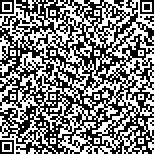| 摘要: |
| [目的]伴随着工业化、城镇化、信息化和农业现代化的快速发展,重庆市正面临着城市建设空间已趋饱和,建设成本不断加大等问题,研究的焦点集中于建设用地开发适宜性评价,为合理使用建设用地提供依据。[方法]评价第一步是对土地资源承载力的限制等级进行划分,在此基础上选取坡度、地质灾害、人均可利用水资源量、人均用地面积、人均GDP、交通便捷性和距建成区距离等指标对建设用地开发适宜性进行评价。[结果](1)重庆市受耕地保护限制的区县9个,主要分布于渝西地区; 受生态保护、坡度限制的区县14个,主要分布于渝东北和渝东南; 受耕地保护、坡度限制的区县4个; 受耕地保护、生态保护限制的区县2个,分别为长寿区和江津区。(2)限制性等级划分结果为6个区县限制性等级为弱, 5个为较弱, 9个为中等, 7个为较强, 9个为强。(3)重庆市适宜建设区面积有限,仅占全市土地总面积的3495%,主要分布于主城区和渝西、渝东北地区; 较不适宜建设区和不适宜建设区所占比例较高,多数受地形坡度、地质灾害、农业用地及生态限制。[结论]重庆市土地资源限制性主导因素有耕地保护限制、坡度限制和生态保护限制,适宜建设的区域主要分布于主城区和渝西片区,渝东北大部分地区和渝东南适宜建设的区域较少且分布零星。 |
| 关键词: 土地资源限制性建设用地适宜性评价承载力 |
| DOI: |
| 分类号:F1299 |
| 基金项目:国家自然科学基金项目“大型山地城市生态绿地的时空格局及其生态效益研究”(41161140352) |
|
| EVALUATION ON DEVELOPMENT SUITABILITY OF CONSTRUCTION LAND IN CHONGQING BASED ON RESTRICTIVE GRADEOF LAND RESOURCES |
|
Tian Tian1, Gu Dahua1※, Zheng Caigui2,3, Guo Huanhuan2,3, Yang Lina2,3, Ma Shiwu4
|
|
1.College of Resources and Environments in Southwest University, Chongqing 400715, China2. Chongqing Land Resources and Housing Surveying and Planning Institute, Chongqing 400020, China;3. Key laboratory of Chongqing in The Ministry of Land Resources of Land Use Research Center, Chongqing 400020, China;4. College of Law in Chongqing Technology and Business University, Chongqing 400020, China
|
| Abstract: |
| With the rapid development of industrialization, urbanization, informatization, and agricultural modernization, Chongqing is facing problems such as the saturation of urban construction space and increasing construction costs. The focus of this study is on the evaluation of construction land development suitability, which can provide basis for rational use of construction land. The first step of evaluation was to classify the limit level of land resources bearing capacity. On this basis, the indicators such as slope, geological disasters, per capita use of water resources, per capita land area, per capita GDP, traffic convenience and distance from built up areas were selected to evaluate the suitability of construction land development. The results of the study were found as follows. (1) 9 areas restricted by arable land protection,which were mainly distributed in the western of Chongqing region; 14 areas subject to ecological protection and slope restrictions, mainly distributed in northeastern and southeastern of Chongqing; and 4 areas subject to arable land protection and slope restriction;2 areas subject to arable land protection and ecological protection were Changshou District and Jiangjin District. (2)The result of the restrictive level classification was that the six regions had a restrictive level of weakness, 5 were weak, 9 were medium, 7 were strong, and 9 were stronger.(3)The area suitable for construction in Chongqing was limited, only accounting for 34.95% of the city′s total land area, mainly in the main urban area and in the western and northeastern of Chongqing; the proportion of unfavorable construction areas and unsuitable construction areas was relatively high, most of which were affected by terrain slope, geological disasters, agricultural land and ecological constraints. The restrictive dominant factors of land resources in Chongqing include farmland protection restrictions, slope restrictions, and ecological protection restrictions. The areas suitable for construction are mainly distributed in the main urban area and the western part of the city. There are few and scattered areas suitable for construction in most parts of northeastern and southeastern of Chongqing. |
| Key words: landresource srestriction construction land development suitability bearing capacity |

